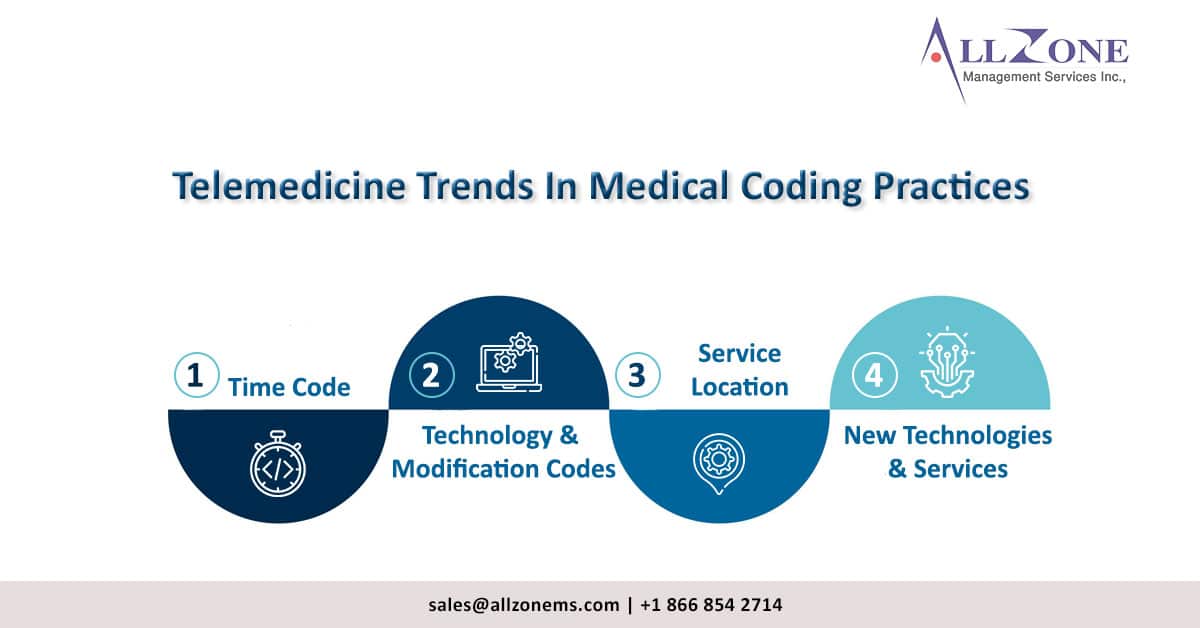Medical coding practices’ evolve as the healthcare landscape rapidly transforms with telemedicine leading the way and the proliferation of virtual consultations. In addition to the unique challenges and opportunities presented by these changes, it is also important to remember that optimizing medical coding procedures and ensuring appropriate reimbursements are also unique challenges presented by these changes.
The Rise of Virtual Care:
With the advancement of technology and the COVID-19 crisis, telemedicine has become very popular. Whether managing chronic conditions or providing emergency care, patients choose the virtual consultation for its convenience and comfort. Global Market Insights, a leading market research firm, predicted 14%. By 2026, telemedicine will reach 5 GR, indicating that telemedicine will continue to grow.
Medical coding practices: Optimizing Medical Coding Strategies for Evolving Physical Examinations and Telehealth:
There is a growing need for traditional coding approaches to adapt to the changing physical examination process. The main areas of attention are:
- Time Code: The structure and duration of a virtual visit differs from a face-to-face meeting. Code identifiers such as GPC19 and 99420-99423 should be used to accurately capture time spent providing and coordinating care.
- Service Location: For accurate billing, it is important to define the difference between the original location and the remote location. It is also important to know the location of the patient and the license status of the provider.
- Technology and modification codes: It is important to use the correct modification codes, such as GT (Transformation Technology) and GY (Gynchronous Telehealth), to correctly process telehealth payments.
- New technologies and services: As smart communications and remote monitoring become more common, medical coding practices must also evolve to accommodate new regulations and guidelines.
Opportunities and challenges:
Telemedicine presents demanding situations and possibilities for pharmacists.
- Lack of clear guidance: Coding regulations have not yet had a chance to fully accommodate the rapid advances in telehealth, leading to confusion and confusion in the field.
- Interoperability issues: Broken healthcare systems can prevent data transfer and accurate identification.
- Potential for fraud and abuse: Because healthcare calls are sent remotely, they create new vulnerabilities for fraudulent medical billing practices.
Even so, there are exciting opportunities in the midst of these challenges:
- Improve coding methodology: The accuracy of coding of virtual events can be improved through detailed documentation and the use of standardized methods.
- Streamlined Workflow: Use automated tools and telehealth-based software to streamline the Medical coding process and reduce administrative burden.
- Improve patient care: Proper labeling of telehealth services is important to ensure fair pricing and ensure patients receive quality care.
Medical coding in the future:
As telehealth continues to change the way healthcare is delivered, telehealth providers must stay ahead of this change. To adapt, it’s important to stay current with current laws, embrace new technologies, and collaborate with healthcare providers. Keeping abreast of evolving Medical coding practices, navigating the challenges, and seizing the opportunities can help medical providers ensure fair and sustainable costs in the era of virtual health.

